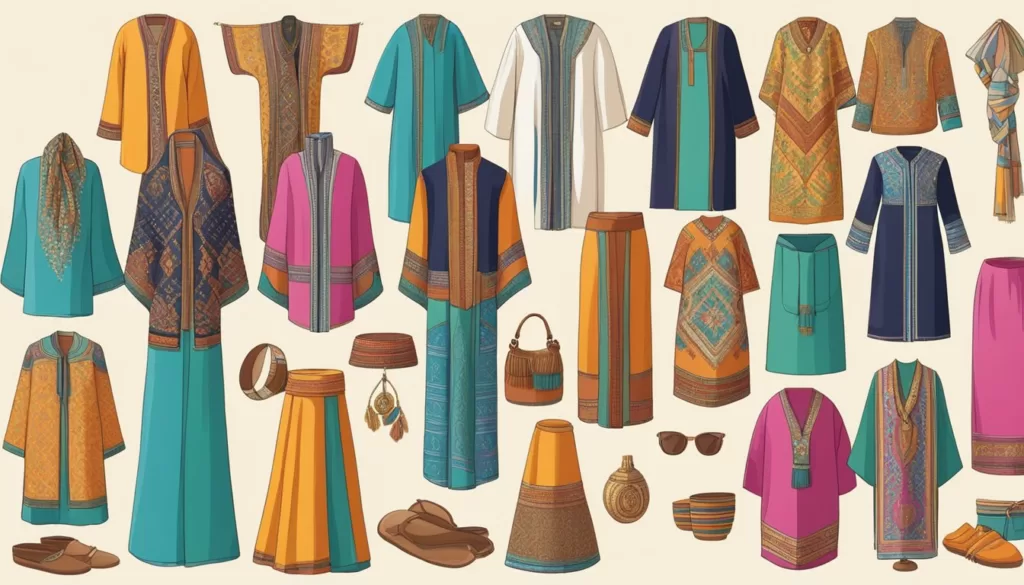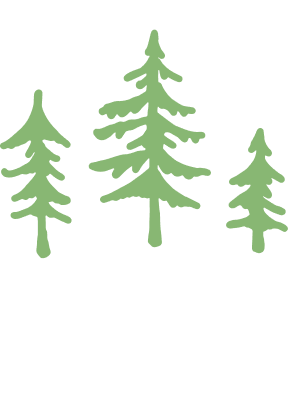Cultural Considerations for Dressing
When traveling to Morocco, it’s important to be mindful of the local customs and religious significance of What to Wear in Morocco. As a predominantly Muslim country, modesty is highly valued, and it’s essential to dress appropriately to avoid offending the locals.
What to Wear in Morocco Understanding Local Customs
Moroccan culture is conservative, and it’s important to dress modestly to show respect for the local customs. Women should avoid wearing revealing clothing, such as shorts, tank tops, or tight-fitting clothing. Instead, they should opt for loose-fitting clothing that covers the arms and legs. Maxi dresses and skirts that fall below the knee are a popular choice for women visiting Morocco. These pieces provide modesty while still keeping you comfortable in the warm weather. Scarves and shawls are also practical accessories to carry with you.
Men should also dress conservatively, wearing long pants and shirts with sleeves. Shorts are generally not acceptable unless you’re on the beach or participating in a sporting activity.
Religious Significance of Clothing
Islam is the predominant religion in Morocco, and clothing has significant religious importance. For example, the hijab is a headscarf worn by Muslim women to cover their hair, neck, and ears. It’s a symbol of modesty and religious piety. Although it’s not mandatory for non-Muslim women to wear a hijab, it’s respectful to cover your hair with a scarf or shawl when entering a mosque.
It’s also important to note that during the holy month of Ramadan, Muslims fast from dawn until dusk. It’s respectful to dress modestly during this time and avoid eating, drinking, or smoking in public places.
Overall, it’s essential to dress appropriately when visiting Morocco to show respect for the local customs and religious beliefs.
Related Posts:
Weather and Seasonal Influence
When it comes to what to wear in Morocco, it is essential to consider the country’s weather and seasonal influence. Morocco has a diverse climate, with hot summers and mild winters, and it can vary depending on the location. The best time to visit Morocco is during spring (March to May) and autumn (September to November) when the weather is mild and pleasant.
Summer Attire
Summer in Morocco can be extremely hot, with temperatures reaching up to 40°C (104°F). Lightweight and breathable clothing is essential to stay comfortable in the heat. Loose-fitting cotton or linen tops, dresses, and skirts are ideal for women. Men can wear lightweight cotton shirts and shorts. It is also recommended to wear a hat and sunglasses to protect against the intense sun.
Winter Clothing
Winter in Morocco is mild, with temperatures ranging from 5°C to 20°C (41°F to 68°F). It is essential to pack warm clothing, especially if you are visiting the mountains or the desert. Sweaters, jackets, and coats are necessary for colder temperatures. Women can wear leggings or tights under skirts or dresses for extra warmth. Men can wear jeans or trousers with a sweater or jacket.
Layering for Varied Climates
Morocco has a varied climate, and temperatures can vary depending on the location. Layering is essential to stay comfortable in varied climates. Packing a lightweight jacket or sweater is recommended, even during the summer months. It is also a good idea to pack a scarf or shawl to cover your head and shoulders in conservative areas.
Overall, it is essential to dress conservatively in Morocco, especially in rural areas. Women should avoid wearing revealing clothing and opt for clothing that covers their shoulders and knees. Men should avoid wearing shorts and sleeveless shirts. It is also important to wear comfortable shoes, as there is a lot of walking involved in exploring Morocco’s cities and attractions.
Related Posts:
- Best Places to Visit in Morocco During Winter
- Best Time to Visit Morocco 2024
- Visiting Morocco in Winter: Best Places to Stay and Warmest Locations
Essential Items for Travelers

When planning a trip to Morocco, it is important to pack the right clothing and footwear to ensure a comfortable and enjoyable experience. Here are some essential items that travelers should consider bringing when deciding what to wear in Morocco.
Footwear for Different Terrains
Morocco is known for its varied terrain, from the sandy beaches to the rocky mountains. Therefore, it is important to bring appropriate footwear for different activities and terrains. For example, if planning to hike in the Atlas Mountains, it is recommended to bring sturdy hiking boots with good ankle support. On the other hand, if planning to spend time in the desert, sandals or flip-flops are more appropriate as they allow the feet to breathe and stay cool.
Headwear for Sun and Sand
Morocco is a sunny country, and it is important to protect the head and face from the sun’s harmful rays. A wide-brimmed hat or a scarf can provide shade and keep the head cool. Additionally, when visiting the Sahara Desert, it is important to protect the face and eyes from the blowing sand. A lightweight scarf or a pair of sunglasses can help protect against the sand and dust.
When packing for a trip to Morocco, it is important to consider the activities planned and the weather conditions. In addition to the items mentioned above, travelers should also pack comfortable and breathable clothing, such as loose-fitting pants and tops made from lightweight fabrics. It is also recommended to bring a jacket or sweater for cooler evenings, especially if traveling during the winter months.
Overall, by packing the right clothing and footwear, travelers can fully enjoy all that Morocco has to offer.
Relevant Facts:
- Morocco is a predominantly Muslim country, and it is important to dress modestly, especially when visiting religious sites.
- The weather in Morocco can vary greatly depending on the region and time of year. In general, the summer months can be extremely hot, while the winter months can be chilly, especially in the evenings.
- Morocco is known for its vibrant and colorful markets, and visitors may want to bring a bag or backpack to carry their purchases.
Table:
| Type of Footwear | Best for | Examples |
|---|---|---|
| Hiking boots | Hiking in the Atlas Mountains | Merrell Moab 2 Mid Waterproof |
| Sandals | Exploring the cities and beaches | Teva Original Universal Sandals |
| Flip-flops | Relaxing by the pool or beach | Havaianas Top Flip Flops |
Quote:
“A trip to Morocco can be an unforgettable experience, but it’s important to pack the right clothing and footwear to ensure a comfortable and enjoyable trip.” – Travel + Leisure
URLs to Link To:
- Merrell Moab 2 Mid Waterproof
- Teva Original Universal Sandals
- Havaianas Top Flip Flops
- Travel + Leisure
Female Travelers’ Dress Code
Traveling to Morocco can be an exciting adventure, but it is important to be mindful of the cultural norms and dress code. Female travelers, in particular, should pay attention to their attire to ensure they are respectful of the local culture.
Appropriate Outfits for Women
When it comes to what to wear in Morocco, female travelers should aim for conservative and modest clothing. This means covering the shoulders, arms, and legs. Loose-fitting clothing is also recommended, as it can help keep you cool in the heat.
Some appropriate outfits for women include loose trousers or maxi skirts paired with a tunic dress or shirt. Full-coverage clothing can also protect you from the sun. Practical shoes are also a must, especially if you plan on doing a lot of walking or hiking.
Adapting to Local Fashion
While it is important to dress modestly, there is also an opportunity to adapt to local fashion. Moroccan fashion is known for its vibrant colors and intricate designs. Women can incorporate local fashion by wearing a traditional djellaba or kaftan. These garments are not only comfortable but also beautiful and can be found in many local markets.
It is also important to note that some areas in Morocco are more conservative than others. In cities like Marrakech or Casablanca, women can dress more freely, while in smaller towns and villages, it is best to err on the side of caution and dress more conservatively.
Overall, female travelers should aim for modest and respectful clothing when visiting Morocco. By dressing appropriately, travelers can show respect for the local culture and make the most of their trip.
Relevant Facts and Quotes
- According to The Blonde Abroad, “All things lightweight and full coverage is ideal—loose trousers or maxi skirts are perfect.”
- USA Today recommends wearing a long skirt or pants with a loose-fitting shirt, such as a breezy tunic.
- The traditional djellaba or kaftan can be found in many local markets and is a comfortable and beautiful option for female travelers.
Table: Dos and Don’ts of Female Travelers’ Dress Code in Morocco
| Dos | Don’ts |
|---|---|
| Cover shoulders, arms, and legs | Wear revealing clothing |
| Opt for loose-fitting clothing | Wear tight or form-fitting clothing |
| Wear practical shoes | Wear high heels or sandals with no support |
| Incorporate local fashion | Wear clothing with offensive graphics or slogans |
URLs to Link To
Male Travelers’ Dress Code
When it comes to dressing in Morocco, male travelers should keep in mind that the country is predominantly Muslim. Therefore, it is important to dress modestly and respectfully. Shorts and tank tops are generally not acceptable, especially in more conservative areas. Instead, opt for lightweight, breathable clothing that covers the shoulders and knees.
Men’s Attire for Different Occasions
For a day of sightseeing, comfortable pants and a short-sleeved shirt are appropriate. A lightweight jacket or sweater may be necessary for cooler mornings or evenings. If visiting a mosque or other religious site, it is important to dress conservatively. Long pants and a long-sleeved shirt are necessary, and it is recommended to bring a scarf to cover the head.
For a night out, men can dress up a bit more. A collared shirt and dress pants are appropriate for a fancier restaurant or club. However, it is important to note that Morocco is a relatively conservative country, so it is best to err on the side of caution and avoid anything too flashy or revealing.
Formal vs Casual Options
In general, Morocco is a relatively casual country, and men can get away with wearing more relaxed clothing. However, some occasions call for more formal attire. For example, if attending a wedding or other special event, a suit and tie may be necessary. It is always a good idea to check with the host or event organizer to determine the appropriate dress code.
Overall, male travelers to Morocco should aim for modest, comfortable clothing that covers the shoulders and knees. It is also important to be respectful of local customs and traditions.
Related Posts:
Shopping for Clothing in Morocco
Morocco is famous for its vibrant and colorful markets, where you can find a wide range of traditional clothing, textiles, and souvenirs. Shopping for clothing in Morocco can be an exciting experience, especially for those who want to immerse themselves in the local culture. In this section, we will discuss the best places to shop for clothing in Morocco.
Local Markets and Boutiques
One of the best places to shop for clothing in Morocco is at the local markets and boutiques. These markets are full of traditional clothing, including kaftans, djellabas, and babouches. The markets are also a great place to find unique textiles, such as Moroccan rugs, blankets, and pillowcases.
One of the most famous markets in Morocco is the Marrakech Souk, where you can find a wide range of clothing and textiles. The souk is divided into different sections, including one for clothing and one for textiles. The clothing section has a wide range of traditional clothing, while the textile section has a variety of fabrics and textiles, including silk, cotton, and wool.
In addition to the souks, many local boutiques sell traditional Moroccan clothing. These boutiques are a great place to find high-quality clothing that is made by local artisans. Many of these boutiques also offer custom-made clothing, so you can get a unique piece that is tailored to your specific needs.
Souvenirs and Textiles
Morocco is also famous for its textiles and souvenirs. These items are a great way to bring a piece of Morocco home with you. Some of the most popular souvenirs include Moroccan rugs, blankets, and pillowcases. These items are often made by hand and are available in a wide range of colors and patterns.
Another popular souvenir is Moroccan pottery and ceramics. These items are often decorated with intricate designs and are available in a variety of sizes and shapes. Tamegroute, a small village located in the Draa Valley of Morocco, is known for its unique pottery and ceramics.
When shopping for textiles and souvenirs in Morocco, it is important to keep in mind the customs and traditions of the local people. It is considered disrespectful to bargain aggressively or to haggle over the price of an item. Instead, it is best to approach the shopping experience with a sense of respect and appreciation for the local culture.
Related Posts:




